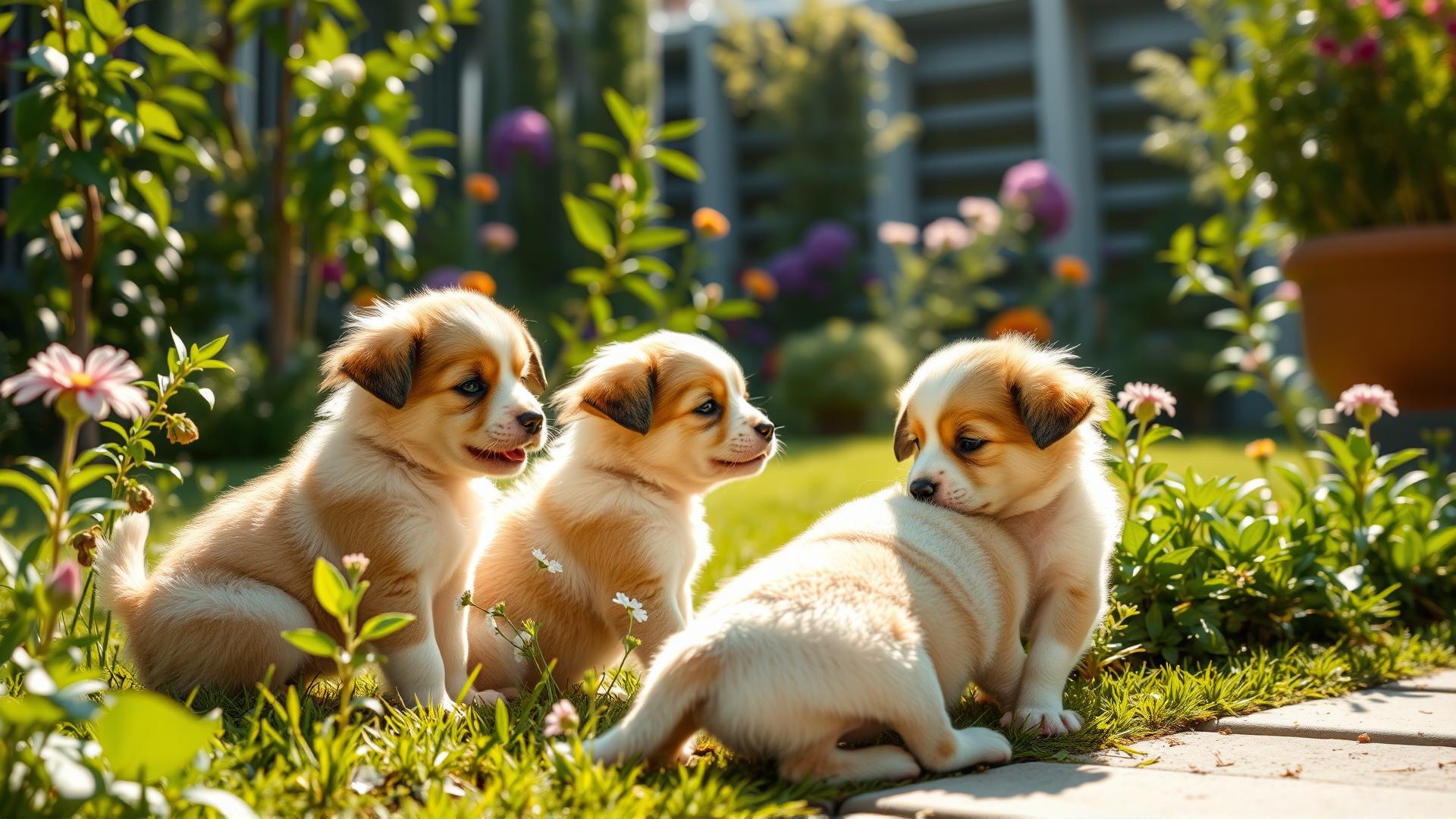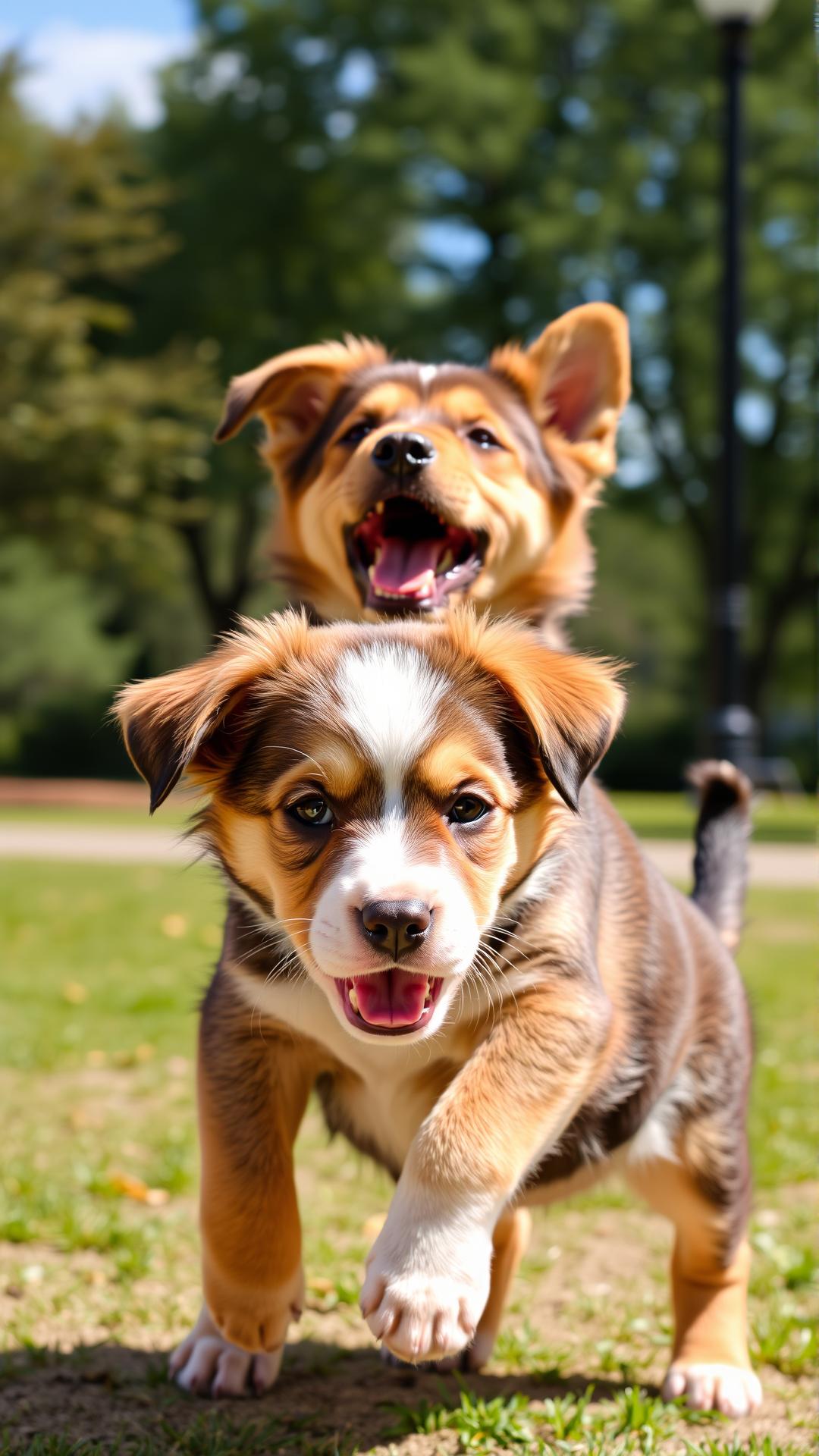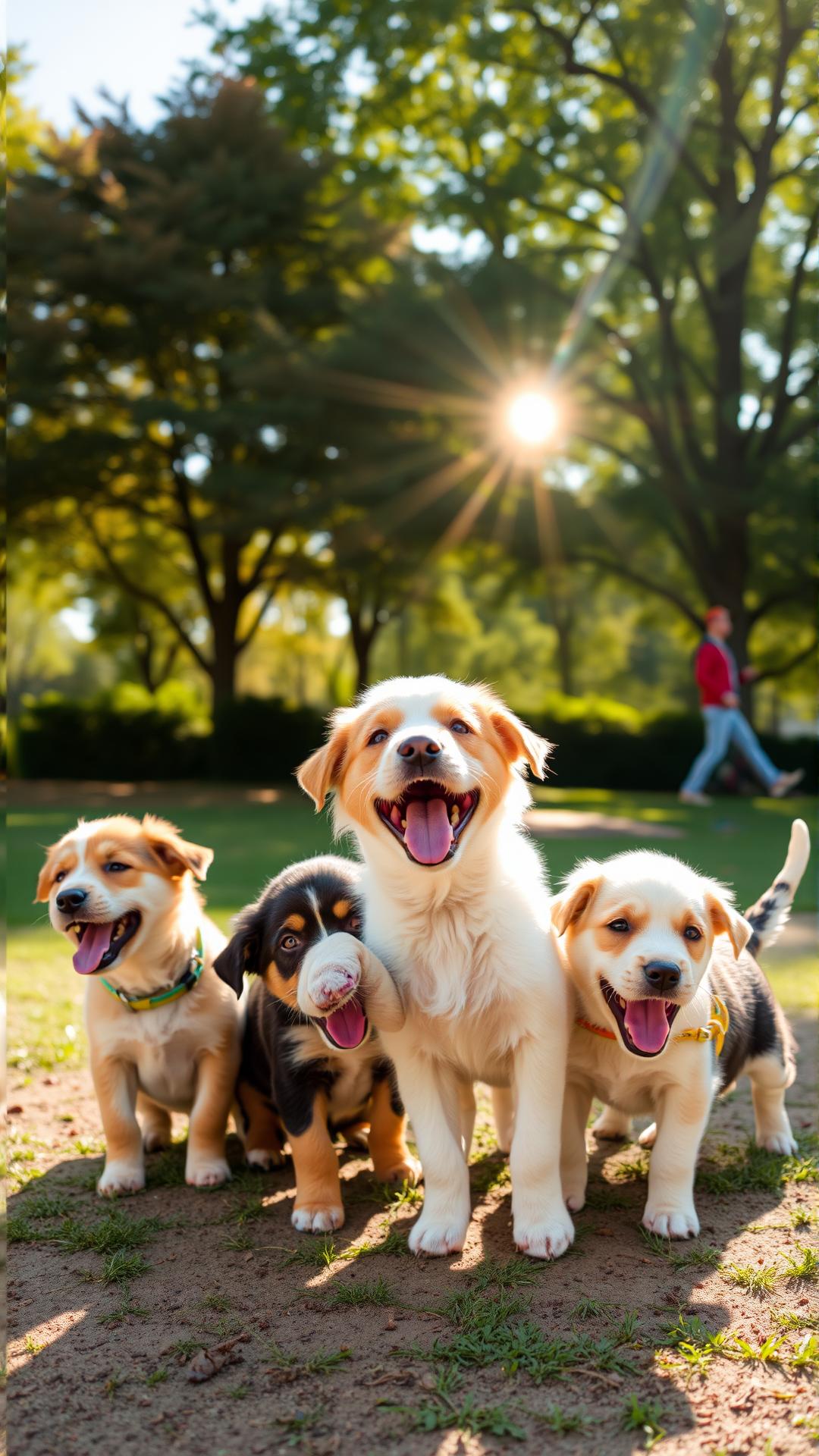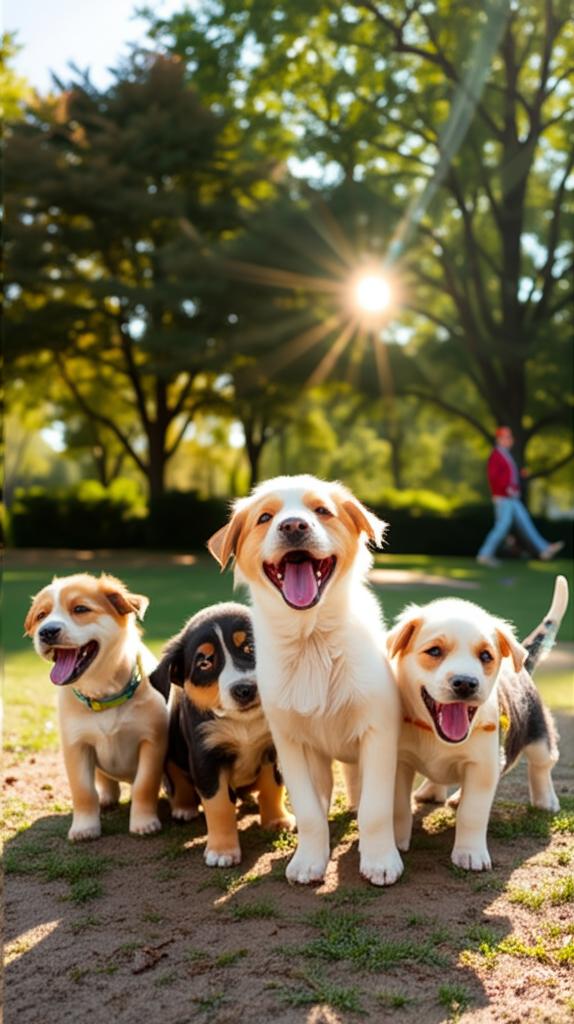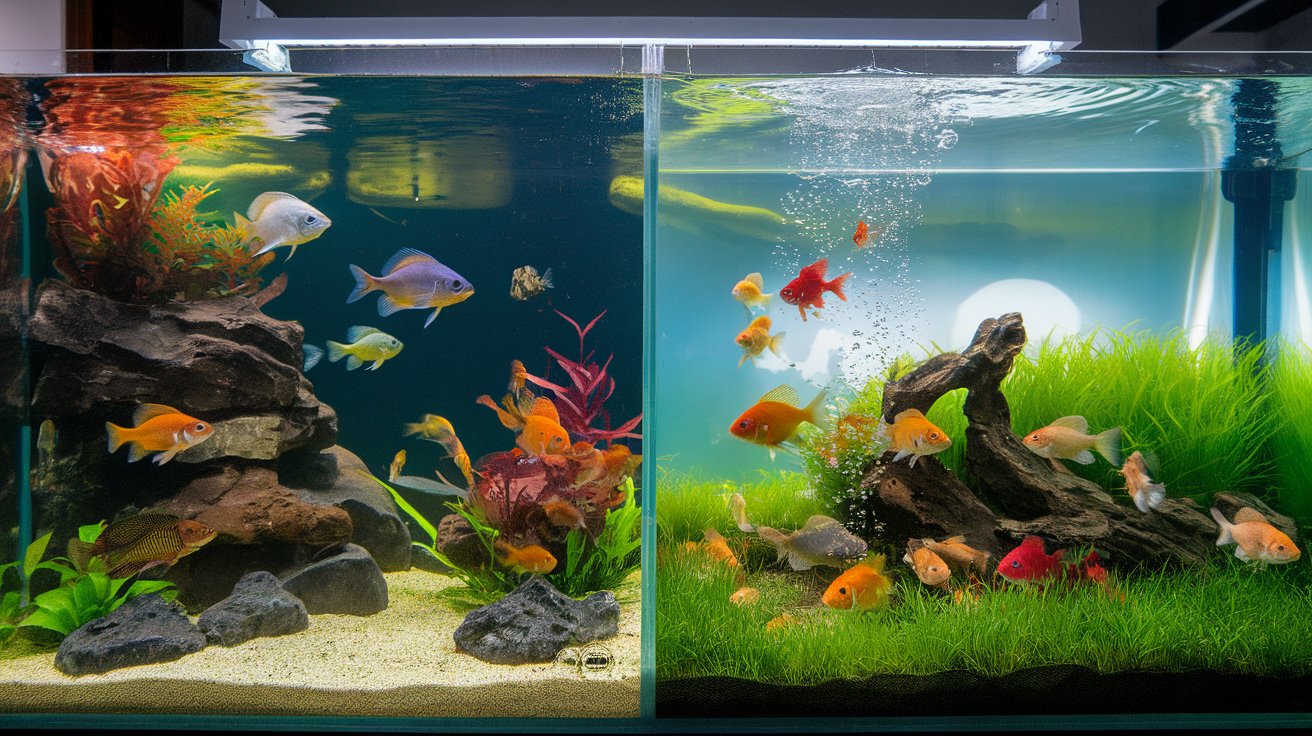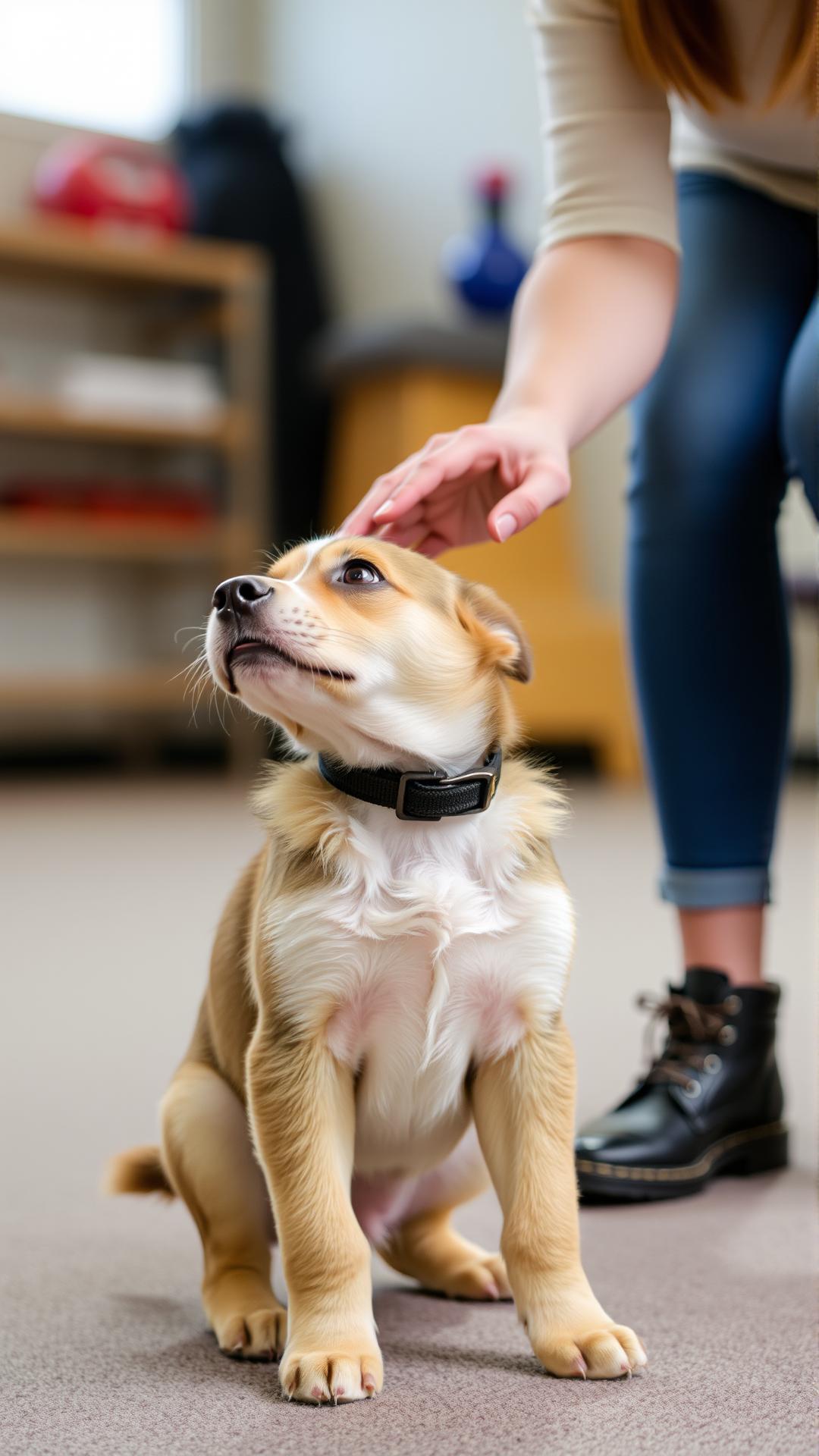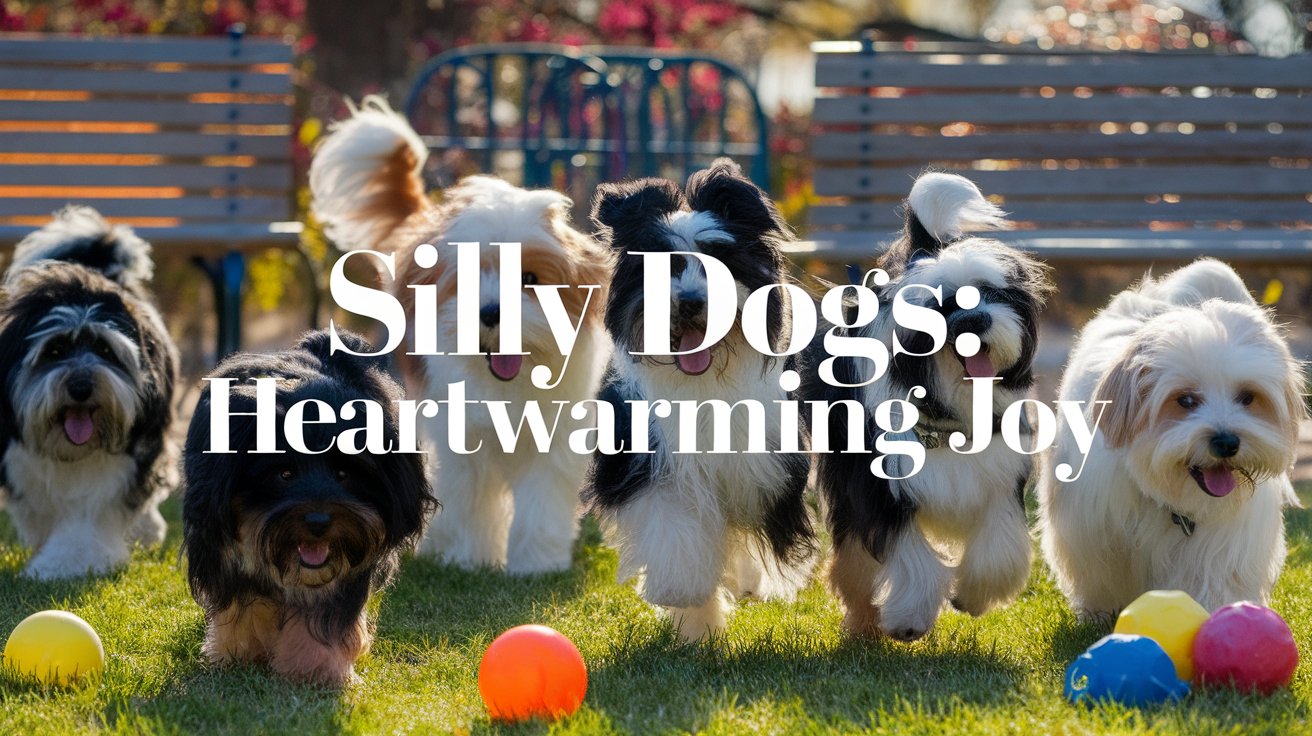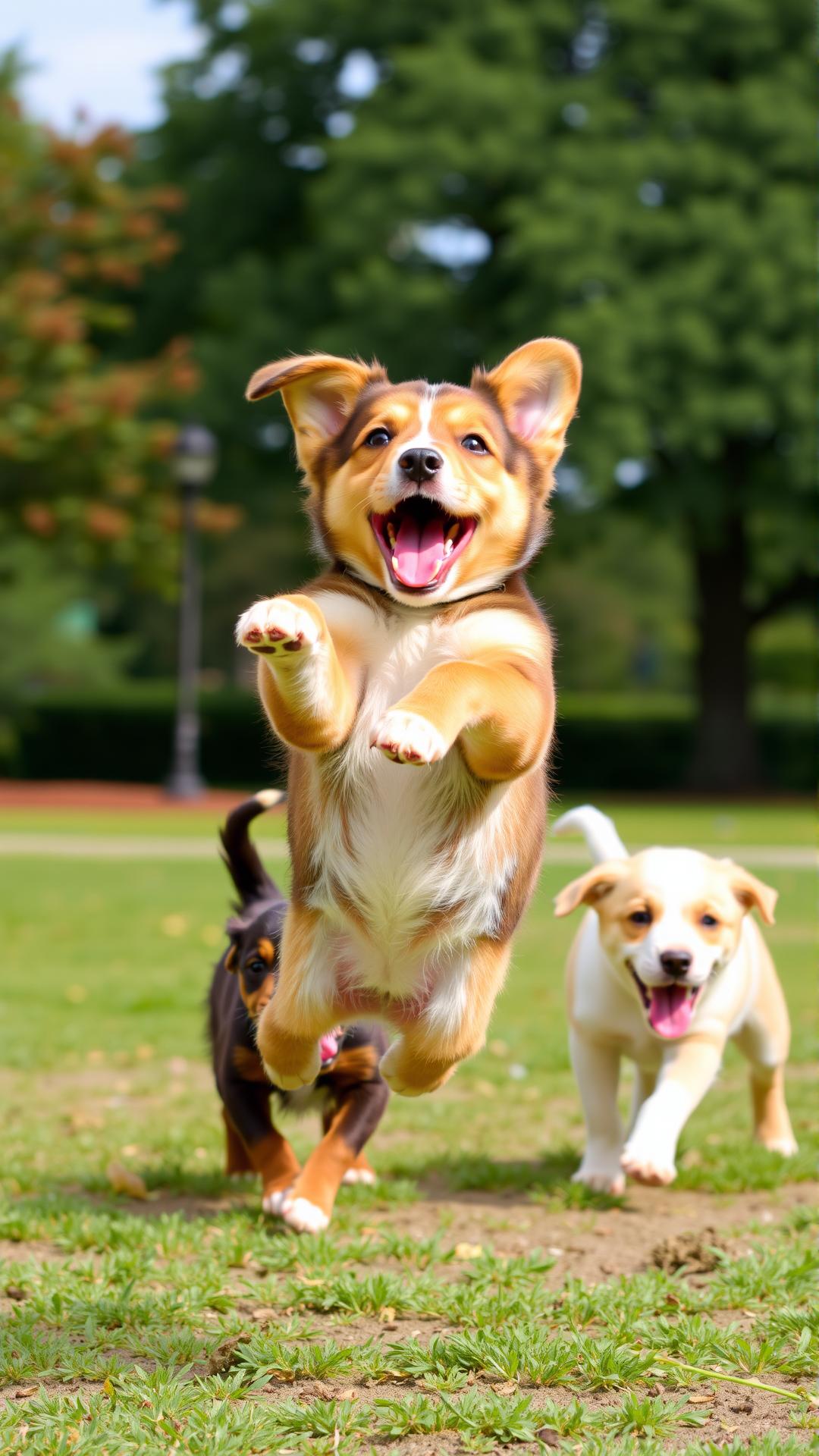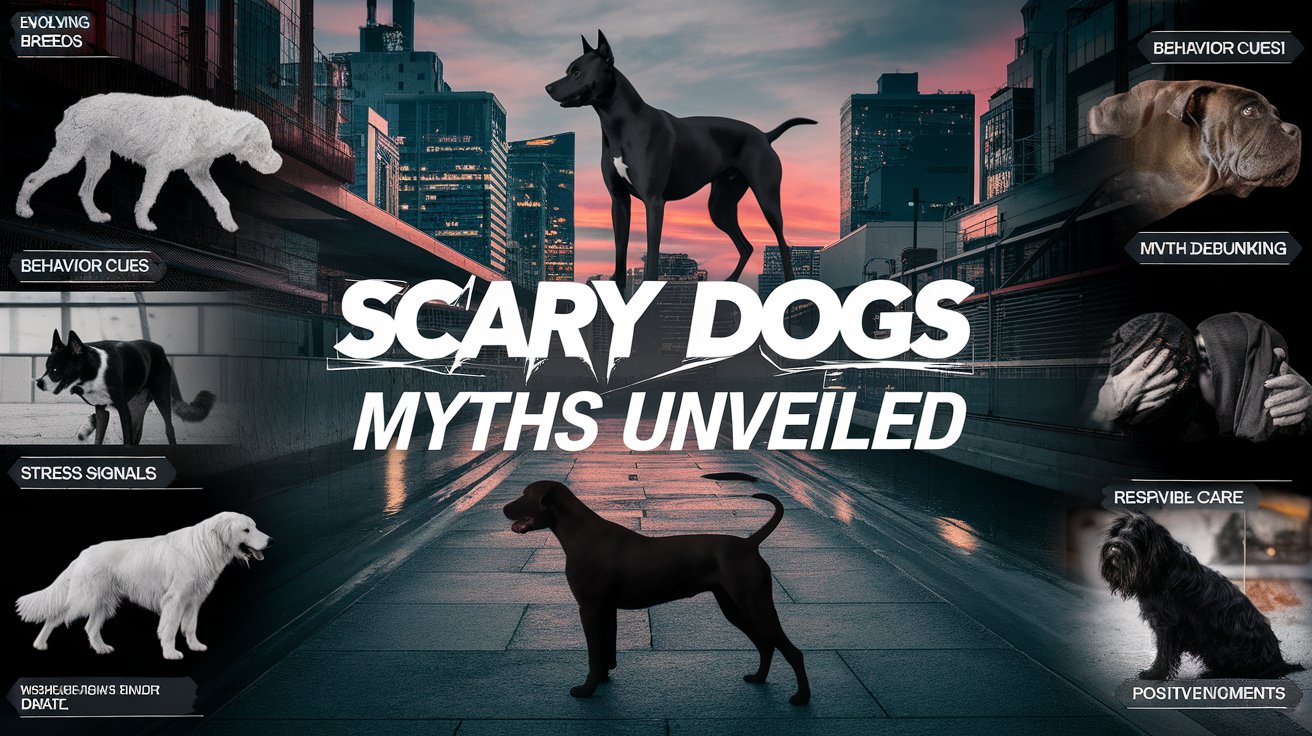Introduction
The world of very cute puppies is not only charming but also filled with fascinating communication patterns that reveal their needs and emotions. Puppies possess innate qualities that trigger affection and care in humans, rooted in the biological and psychological principles of cuteness. This article explores the adorable aspects of puppy behavior, emphasizing how understanding these communication modes can enhance our relationships with them.
By analyzing the collective behaviors of puppies, from their vocalizations to their playful interactions, we can foster better care standards and enrich the bonds we share. As we delve deeper into their language and social cues, we will uncover the vital role cuteness plays in how we connect with these delightful companions, transforming our perceptions into actionable insights for healthier canine friendships.
The Science of Cuteness in Puppies
Cuteness Criteria and Evolutionary Perspectives
The concept of cuteness, particularly in puppies, has captivated human emotions and interactions for centuries. From a biological viewpoint, traits considered cute—such as large eyes, a flattened face, and round bodies—are typically associated with neotenous characteristics. Neoteny is the retention of juvenile features into adulthood, and in the case of dogs, these attributes often evoke nurturing behavior from humans. Historically, the domestication of dogs has been significantly shaped by humans’ preferences for these adorable traits, turning dogs into companions that satisfy our emotional needs and social structures.
Studies in psychology suggest that the neural responses to cute stimuli engage the brain’s reward system, highlighting the pleasure humans derive from being exposed to such adorable beings. In this context, puppies are particularly impactful; their playful antics and charming appearances boost our mood and foster positive emotions. This links to the evolutionary role that cuteness plays in ensuring the survival of a species. By making puppies endearing, dogs have developed a unique ability to elicit care and protection from humans, allowing them to thrive alongside us.
The Biochemical Basis of Cuteness
Biochemically, the response to cuteness can be attributed to the release of dopamine, a neurotransmitter associated with pleasure and rewards. When humans interact with puppies, whether through petting, playing, or simply observing their antics, their bodies respond by releasing dopamine, enhancing the emotional bond between species. This interaction can also be seen through physical actions; humans often mimic the playful body movements of puppies, further strengthening their connections to these delightful creatures.
The historical context of canine breeding cannot be overlooked, as breeders have selectively enhanced traits that contribute to cuteness over generations. For instance, the corgi puppy, with its stubby legs and oversized ears, is a breed that embodies these qualities, captivating dog lovers worldwide. This focus on cuteness not only serves aesthetic preferences but also enforces social bonds, further enhancing the inter-species relationship that humans and dogs share.
Understanding the myriad ways in which cuteness influences our interactions with puppies reveals the depth of this connection. It is a symbiotic relationship, where both species find joy, companionship, and sometimes even emotional healing through their bond, highlighting the profound impact of cuteness on communication and behavior.
Communication Patterns in Puppies Understanding How Cuteness Enhances Interaction
Puppies, with their innate cuteness, engage in a rich tapestry of communication that is both fascinating and essential for their development. These adorable companions utilize a variety of methods to convey their feelings and needs, not only to humans but also to each other. Understanding these communication patterns is crucial, as they reflect the close bond that forms between puppies and their caregivers.
Body Language: The Unspoken Language of Puppies
One of the most significant ways puppies communicate is through body language. Their movements and postures express emotions ranging from excitement to fear. For example, a playful puppy may bow with its front legs lowered, tail wagging, inviting another dog or human to play. Conversely, a puppy that feels threatened may tuck its tail between its legs, lower its body, and flatten its ears against its head. Recognizing these signals can greatly enhance interactions with them and forge a deeper understanding of their emotional state.
Vocalizations: A Symphony of Sounds
Puppies possess a diverse repertoire of vocalizations, each serving a different purpose. From playful barks and excited yips when welcoming their humans to softer whines or growls that express discomfort or anxiety, understanding these sounds can greatly enhance the owner-puppy relationship. Puppies may also use growls to establish boundaries with other dogs, communicating their territory and intentions clearly. Through careful observation, owners can respond appropriately to their puppies’ needs, ensuring a harmonious atmosphere.
Facial Expressions: The Puppy’s Emotional Palette
The facial expressions of puppies are another vital aspect of their communication. Their wide, innocent eyes can convey vulnerability, eliciting protective instincts in humans. Raised eyebrows or a tilted head often indicate curiosity, enticing a response from their human companions. When they flash their adorable puppy smiles or pout their lips, they are communicating joy or a desire for attention. Appreciating these subtleties allows for a more profound connection between puppies and their caregivers, fostering trust and understanding.
By paying close attention to the combination of body language, vocalizations, and facial expressions, humans can significantly enhance their interactions with these cute canines. Understanding how puppies communicate not only strengthens the bond between species but also supports their emotional well-being and development. As we continue to explore the nuances of puppy communication, we unlock the path towards healthier and happier relationships with our adorable companions.
Socialization and Its Impact on Communication
Socialization plays a critical role in shaping the communication skills of very cute puppies. Early experiences with humans and other dogs are essential for their development. When puppies are socialized properly, they learn to interpret various signals and cues, both from people and their furry peers. This understanding fosters a harmonious relationship, enhancing their ability to convey emotions and intentions effectively.
Puppies that are introduced to different environments, people, and experiences from a young age tend to exhibit more adaptive communication patterns. They develop a richer vocabulary of body language, vocalizations, and facial expressions that are crucial for interactions. For instance, a well-socialized puppy may approach unfamiliar humans with enthusiasm, showing eagerness rather than fear. This positive interaction reduces anxiety and encourages a playful atmosphere, allowing for meaningful exchanges.
Puppies that lack sufficient socialization may become fearful or aggressive in unfamiliar situations. Such behavior can stem from a failure to comprehend the signals sent by others around them. A shy or anxious puppy might display avoidance behaviors and miss out on crucial bonding opportunities. This lack of social skills can create misunderstandings, resulting in strained communications with humans and other dogs. The further development of their communication abilities is essentially stunted, impacting their overall quality of life.
Socialization also shapes how puppies interact with their littermates and adult dogs. During their formative weeks, they learn vital skills such as play-biting moderation, submission, and various forms of vocalizations. By observing and engaging with other dogs, they fine-tune their ability to communicate effectively. This includes understanding non-verbal cues, like tail position and ear movements, which convey emotions such as playfulness, aggression, or submission.
In these interactions, puppies experience different social dynamics, which empower them to express themselves in a more nuanced manner. As socialization progresses, they learn to adapt their communication styles based on the reactions they receive—encouraging increased confidence and improved interactions. The establishment of these essential social bonds during puppyhood sets the foundation for a lifetime of effective communication, not only with humans but also within the canine community.
Cuteness and Training Enhancing Communication
The innate cuteness of puppies plays a significant role in shaping their training experiences and outcomes. This factor not only draws humans to these adorable animals but also influences how effectively communication can occur during training sessions. The way puppies interact with their trainers can be deeply affected by their endearing qualities, enhancing both the emotional connection and the learning process.
One of the most immediate ways cuteness impacts training is through increased motivation. Humans naturally respond more positively to cute stimuli, leading to heightened engagement during training. This emotional connection encourages owners to spend more time teaching their puppies essential commands and behavior. With cuter dogs like corgi puppies or various small breeds, trainers may find themselves more patient, nurturing, and consistent.
Positive reinforcement techniques, such as treats and praise, are particularly effective for puppies. The cuteness factor influences the trainer’s tone and body language, fostering an environment rich in affection. Trainers tend to exhibit softer vocal tones and higher energy levels when interacting with cute puppies, which not only makes the learning experience enjoyable but also helps the puppy associate training with positive feelings. When a puppy recognizes that they have succeeded in pleasing their cute human, the bond between them strengthens.
During these training sessions, the adorable antics of puppies often serve as a source of entertainment and joy, allowing deeper emotional interactions. For instance, even while learning basic commands like “sit” or “stay,” a puppy’s playful nature and expressive features can dilute the pressure associated with training. This element of fun promotes a better understanding of commands, as the puppy is more likely to remain engaged when the atmosphere is relaxed and light-hearted.
The communication patterns of puppies are also influenced by their cuteness during training. Puppies are quick to respond to visual and auditory cues, but the added cuteness factor can enhance their attentiveness. For example, a trainer exhibiting enthusiasm in their delivery may evoke an animated reaction from the puppy, further promoting interaction and reinforcing responses to commands. The combination of cuteness and effective communication fosters a genuine understanding between the puppy and their trainer, essential for building a lifelong, trusting bond. Puppies thrive when their training reflects the natural affection and joy they elicit from their humans, creating a harmonious relationship that carries well beyond the training phase.
The Role of Play in Puppy Communication
Understanding Interaction through Playful Engagement
Play serves as an essential form of communication among puppies, functioning as a language through which they convey intentions, emotions, and social hierarchies. The act of play embodies a mixed bag of behaviors, from undisguised joy to competition, and even negotiation. Within the realm of cuteness, puppies wield their playful actions to connect with both their peers and human companions, establishing a bond that enhances overall communication.
During playtime, puppies express themselves in various ways that are easily interpreted by those familiar with their behaviors. For instance, a playful bark often signifies an invitation, while a play bow—a position where a puppy stretches its front legs forward while keeping its rear raised—demonstrates eagerness and friendliness. Such physical expressions encourage other puppies to join in, reinforcing social bonds and teaching important skills like coordination and boundary setting. As puppies engage in playful tussles, they learn to read cues, navigate social dynamics, and establish their identity within a group.
When humans partake in play with puppies, this interaction bridges the communication gap between species. A thrown ball or tug-of-war game can elicit a spectrum of responses, signaling excitement, curiosity, or even a desire for comfort. The mere act of engaging in play not only cultivates trust but also enhances understanding of one another’s cues. For instance, when a puppy attempts to engage a human in play, its delightful antics plant the seeds for deeper communication, often resulting in enhanced bonding and a more harmonious relationship.
Play also provides a safe outlet for puppies to express their emotions, from exuberant joy to fleeting frustration. As they navigate various play scenarios, puppies learn important lessons about their limits, leading to better emotional regulation. This regulated play behavior does not only benefit puppy-to-puppy interactions but serves as an indicator for humans to grasp their emotional states. Observing a puppy’s play dynamics can offer insights into its comfort level or capacity for engagement, ultimately informing how best to respond to their needs.
Building Communication Through Shared Activities
The shared experience of play significantly enhances communication avenues between puppies and their human caregivers. As interactions unfold through games and playful behavior, attention is drawn to the essential principle that understanding and responding to a puppy’s playful gestures leads to heightened emotional well-being. By implementing structured play sessions, humans can cultivate a language of mutual respect and understanding, crucial elements in addressing the puppy’s needs as they develop. This playful communication, grounded in cuteness and affection, paves the way for deeper insights into their needs, fortifying the journey toward an enriched life together.
Understanding Puppy Needs Through Communication
Decoding Canine Calls
Puppies have a unique and captivating way of communicating their needs, emotions, and personalities. Understanding these subtle signals allows pet owners to forge stronger bonds with their furry companions. When observing our cute dogs, one might notice their body language playing a significant role. A wagging tail, for instance, often indicates excitement, while a lowered head can suggest submission or fear. Recognizing these cues is vital, as they are the primary means through which puppies express their feelings.
Puppy barks can vary in pitch and intensity, each conveying different messages. Higher-pitched yips typically signify eagerness or playfulness, while deeper barks may indicate a warning or discomfort. Understanding these vocalizations is essential for pet owners wishing to respond adequately to their puppy’s needs. Often, a quick bark followed by running in circles is a playful summons. Responding positively reinforces interaction and builds trust.
The Role of Eye Contact and Facial Expressions
The eyes are often said to be the window to the soul, and this holds true for puppies as well. Eye contact is an essential tool for communication. Puppies that maintain eye contact with their owners are usually seeking attention or reassurance. Conversely, if they avoid eye contact, it can indicate anxiety or uncertainty. A relaxed face, complete with a slightly open mouth and soft eyes, reflects contentment, while furrowed brows or stiff body language signals distress.
Understanding these facial expressions can lead to better care. For example, if a puppy displays signs of fear during a new experience, it may be necessary to provide a safe space or gentle reassurance. Conversely, recognizing moments of joy and comfort through playful expressions can enhance training and socialization efforts. This ability to interpret the nuances of a puppy’s communication fosters a deeper connection and a more harmonious relationship.
Effectively catering to puppy needs through understanding their communication enhances overall well-being. Recognizing when they are happy, fearful, or in need, allows for appropriate responses. This not only helps in nurturing them physically but also mentally and emotionally, paving the way for a more fulfilling life together. Engaging with our cute canine companions in this manner ensures they feel valued and understood in their interaction with the world.
Conclusions
The adorable characteristics of very cute puppies serve not merely as a source of joy but as indicators of their communication and emotional needs. Understanding the science behind their cuteness offers insights that enhance how we perceive and interact with them, forging deeper bonds grounded in love and care. Recognizing the impact of socialization, training, and play on their communication can significantly improve the quality of life for these creatures.
By embracing the nuances of puppy communication, we become better caregivers, ensuring a nurturing environment that fosters trust, playfulness, and well-being. As pet owners, taking the time to comprehend these behaviors ultimately enriches our own lives, creating a harmonious existence with our furry friends.

